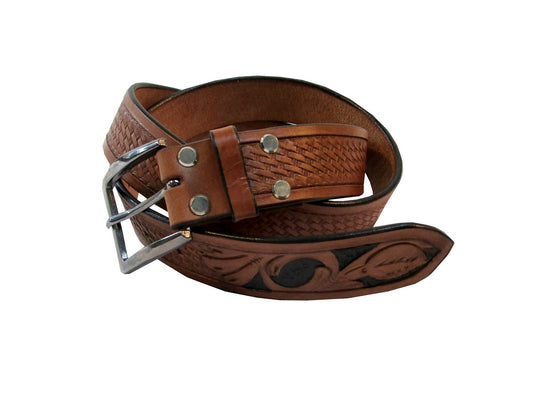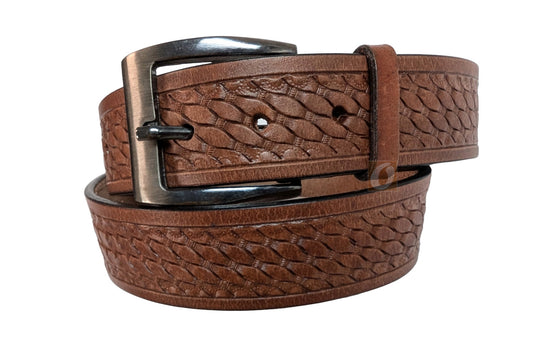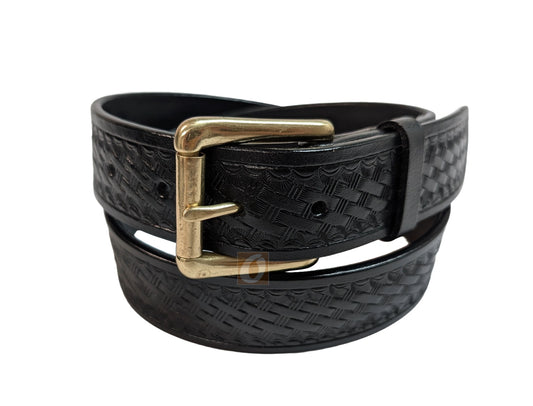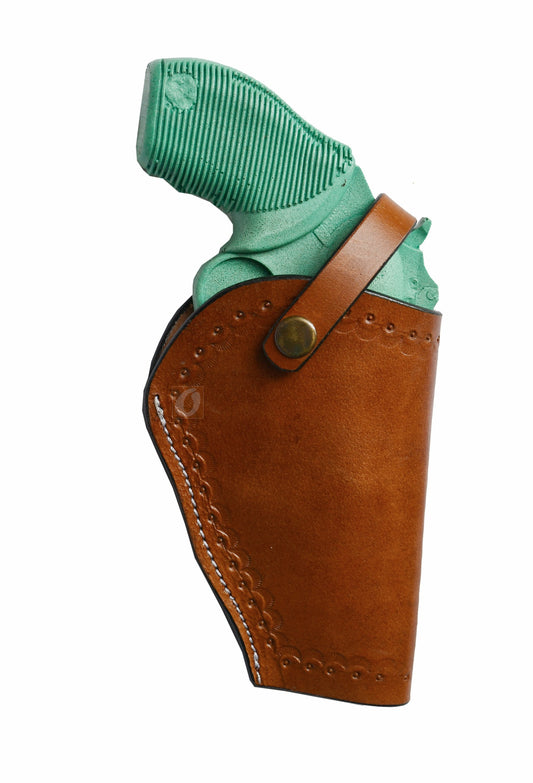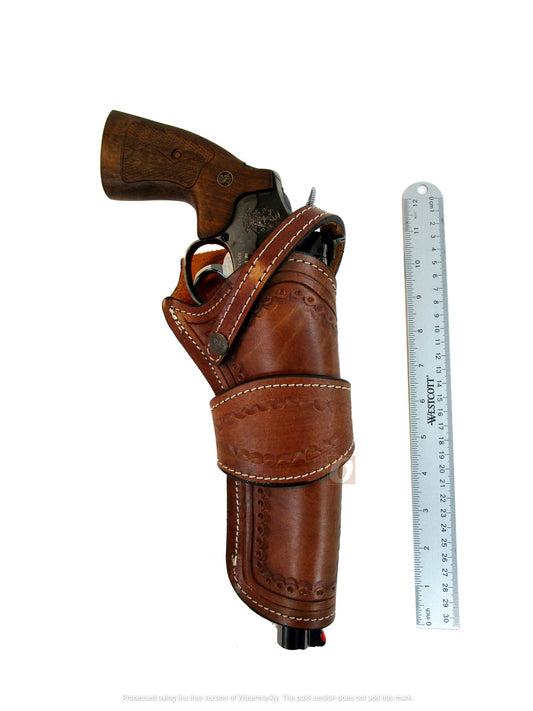Exploring Holster Types: OWB, IWB, and More – What’s Best for You?
Leather Belts
Leather Belts – Handmade Genuine Leather Belts for Men & Women
Explore our handcrafted leather belts built for everyday wear, work, and Western style. Each belt is made from full-grain leather and finished with sturdy hardware for long-lasting strength and comfort. Whether you’re dressing up, heading to the range, or pairing your belt with a leather holster, you’ll find the perfect balance of style and durability here.
Leather Belts Built for Style and Durability
Our premium leather belts are designed for men and women who want style that lasts. Each belt is made from high-quality genuine leather, combining timeless craftsmanship with everyday comfort. Whether you prefer a classic brown leather belt, a sleek black leather belt, or a tooled leather belt with Western flair, you’ll find it here.
Find the Perfect Leather Belt for Any Occasion
From the office to the weekend, a well-chosen belt completes your look. Learn how to style your belt for every setting in our guide From Office to Weekend: How a Leather Belt Can Transition Your Look. For formal wear, pair your belt with matching footwear using the tips in How to Pair Leather Belts with Leather Shoes: A Stylish Match?.
Belts for Every Style
Our collection includes dress belts, casual belts, work belts, Western belts, and school belts. For inspiration, check out Leather Belts for Every Season: How to Style Your Belt Year-Round or see how they fit into modern fashion with The Role of Leather Belts in Men’s Street Style.
Get the Right Fit Every Time
Not sure about sizing? Our guide Leather Belt Sizing: How to Find Your Perfect Fit makes it simple. If you need a durable, comfortable option for school uniforms, explore The Essential Guide to Leather School Belts.
Shop Leather Belts Online
Perfect for jeans, trousers, or suits, our belts are built to age beautifully, developing a rich patina over time. Browse below to find the belt that matches your style and purpose. Complete your look with our leather holsters, Western holsters, or cross draw holsters for a coordinated leather setup.
-
Herren-Ledergürtel, bearbeitetes Büffelleder, Jeans-Hosengürtel für Männer
Normaler Preis $29.99 USDNormaler Preis$39.99 USDVerkaufspreis $29.99 USDSale -
Herrengürtel aus geflochtenem Leder im Cowboy-Western-Stil
Normaler Preis $29.99 USDNormaler Preis$39.99 USDVerkaufspreis $29.99 USDSale -
Leather Belt Mens Jean Work Casual Wear Basket Tooled
Normaler Preis $29.99 USDNormaler Preis$59.99 USDVerkaufspreis $29.99 USDSale -
Herren-Gürtelkorb mit schwarzem Leder, Western-Jeansgürtel für Herren
Normaler Preis $34.99 USDNormaler Preis$49.99 USDVerkaufspreis $34.99 USDSale
Gun holster
Stilvolle handgefertigte Holster für verschiedene Modelle und Größen von Gewehren, Pistolen und Revolvern. Unsere Holster sind aus echtem Leder und mit Nylonfaden vernäht. Unsere Pistolenholster sind für ihre Langlebigkeit und ihren Preis bekannt. Wir stellen unsere eigenen Holster her und produzieren nur wenig, damit wir die Ersparnisse an unsere Kunden weitergeben können. Holster für Pistolen oder Gewehre gehören zu den besten Produktlinien.
Ein Holster ist ein speziell entwickelter Halter, der zum sicheren Tragen und Aufbewahren von Schusswaffen dient. Ein Holster besteht normalerweise aus Leder, Nylon oder Kydex und wird am Körper getragen, oft an der Taille oder an einem Gürtel befestigt. Waffenholster werden von Polizeibeamten, Militärangehörigen und Zivilisten verwendet, die legal eine Schusswaffe zur Selbstverteidigung oder zu Freizeitzwecken tragen.
Wenn Sie ein Holster für eine Waffe oder einen Revolver suchen, sind Sie hier richtig für ein hochwertiges Waffenholster zu einem sehr günstigen Preis inklusive Gratisversand.
-
Lederholster Western Pistolenhülle Revolver Pistolenhalter Universal Passform
Normaler Preis $39.99 USDNormaler Preis$79.99 USDVerkaufspreis $39.99 USDSale -
Taurus Judge Holster Defender Poly Tooled Leather Western 3 Way Carry
Normaler Preis $39.99 USDNormaler Preis$79.99 USDVerkaufspreis $39.99 USDSale -
Pistolenholster mit langem Lauf, Pistole, Revolver, Uni Fit, Schale, geprägtes Leder
Normaler Preis $39.99 USDNormaler Preis$79.99 USDVerkaufspreis $39.99 USDSale -
Western Holster Basket Weave Tooled Leder Single Action Gun Case Revolver Cover
Normaler Preis $29.99 USDNormaler Preis$69.99 USDVerkaufspreis $29.99 USDSale


